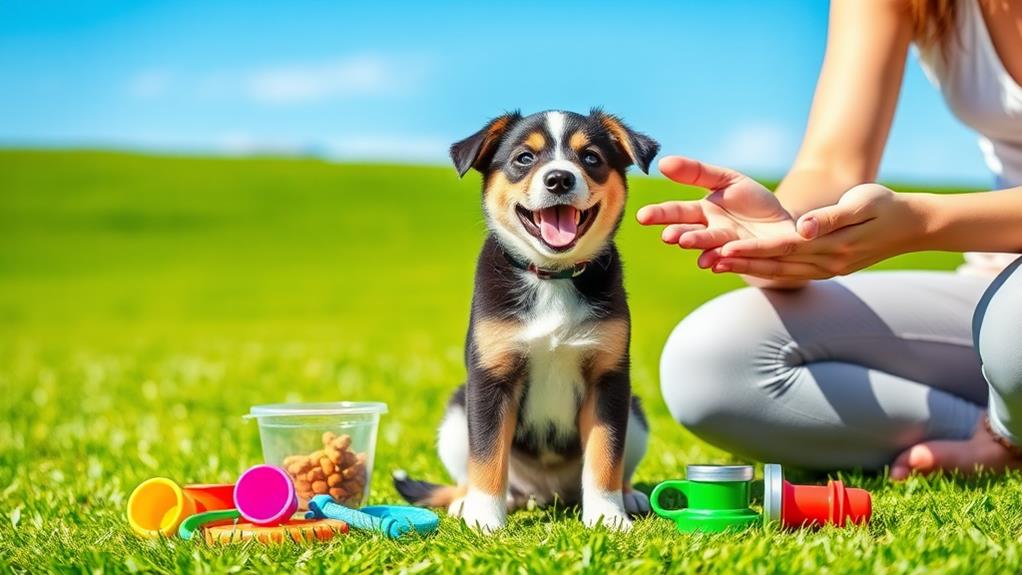You can transform your dog into a well-behaved companion with seven proven tips. Start with basic commands like "sit" and "stay," and use positive reinforcement like treats and praise to encourage good behavior. Consistency in commands and training sessions is key for effective learning. Keep sessions short, around 5-10 minutes, to match your pup's attention span. Early socialization is indispensable, exposing your dog to various people and environments. Incorporate fun games to keep training enjoyable. Finally, remember that patience is essential as your pup learns. Stick around to uncover more techniques that can enhance your training journey!
Start With Basic Commands
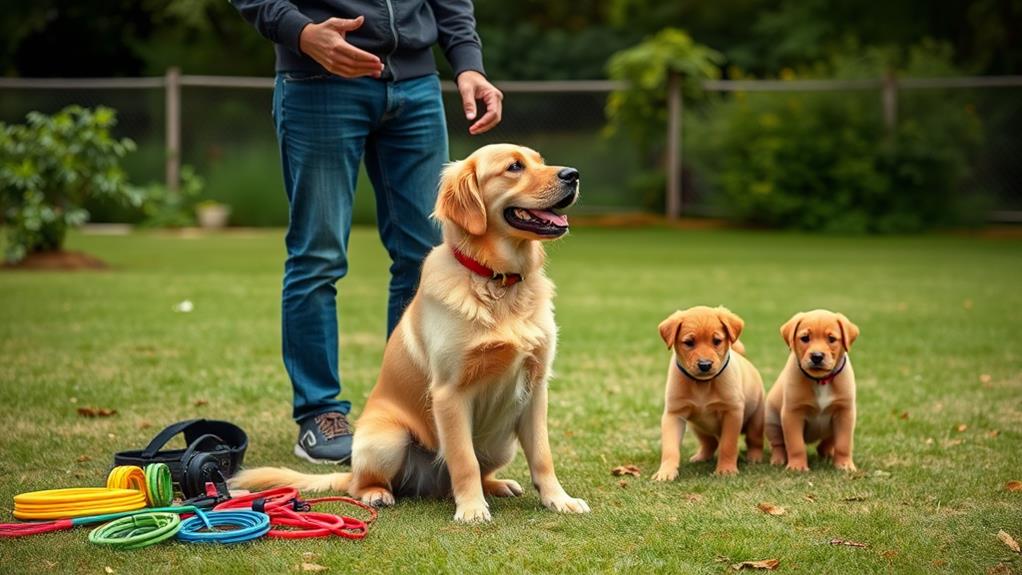
When training your dog, you should consistently start with basic commands. These foundational commands—like "sit," "stay," "come," and "down"—are essential for building a strong relationship between you and your pup. They not only help you communicate effectively but also establish your role as the leader.
Begin your training sessions in a quiet environment with minimal distractions. Use a clear, firm tone for commands, and be patient. Dogs thrive on consistency, so practice these commands regularly. Start with "sit," as it's often the easiest for dogs to grasp. When your dog successfully sits, praise them enthusiastically. This immediate feedback helps reinforce the behavior.
Next, move on to "stay." It's a little more challenging, but with persistence, your dog will learn to remain in place until you release them. Incorporate short training sessions into your daily routine—just 5 to 10 minutes at a time can be very effective. Always remember to keep the sessions fun and engaging. The more enjoyable the experience, the more likely your dog will respond positively and learn quickly. These basic commands lay the groundwork for more advanced training down the line.
Use Positive Reinforcement
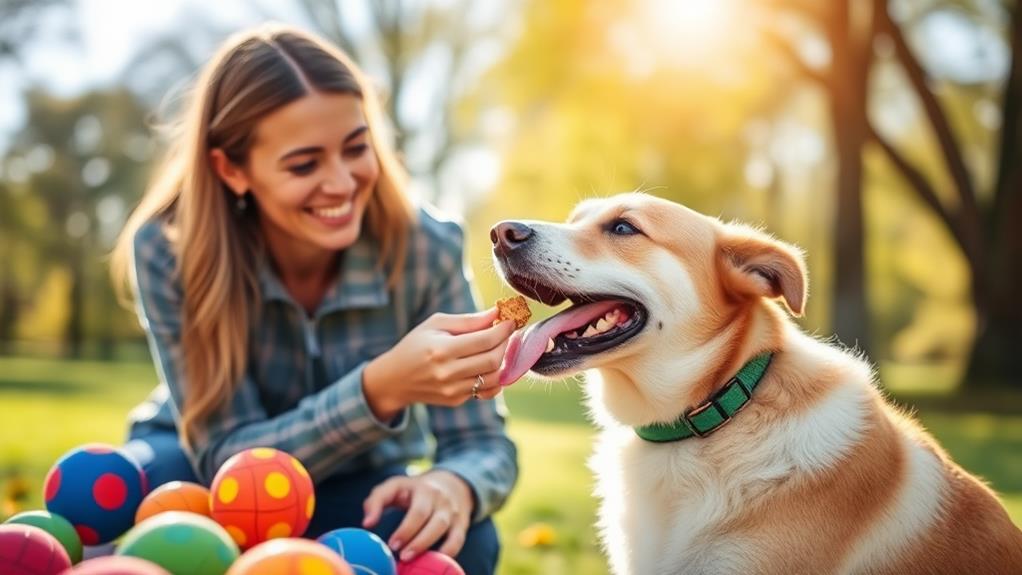
Building on those basic commands, using positive reinforcement is essential to effective dog training. This approach encourages your pup to repeat desired behaviors by rewarding them with treats, praise, or playtime. When your dog successfully follows a command, immediately reward them. This creates a positive association, making them more likely to obey in the future.
Consistency is indispensable here. Make sure you reward your dog every time they do what you ask, especially in the early stages of training. Over time, you can gradually reduce the frequency of treats, replacing them with verbal praise or affection. This helps your pup understand that good behavior leads to good things.
Additionally, timing matters. Deliver the reward right after your dog performs the desired action. If there's too much delay, your dog mightn't connect the reward with their behavior, which can confuse them.
Remember to keep the rewards varied to maintain your dog's interest. Some days, your pup might respond better to a tasty treat, while on others, they may prefer a fun game. Positive reinforcement not only builds a strong bond between you and your dog but also fosters a happy, obedient pet.
Be Consistent With Training
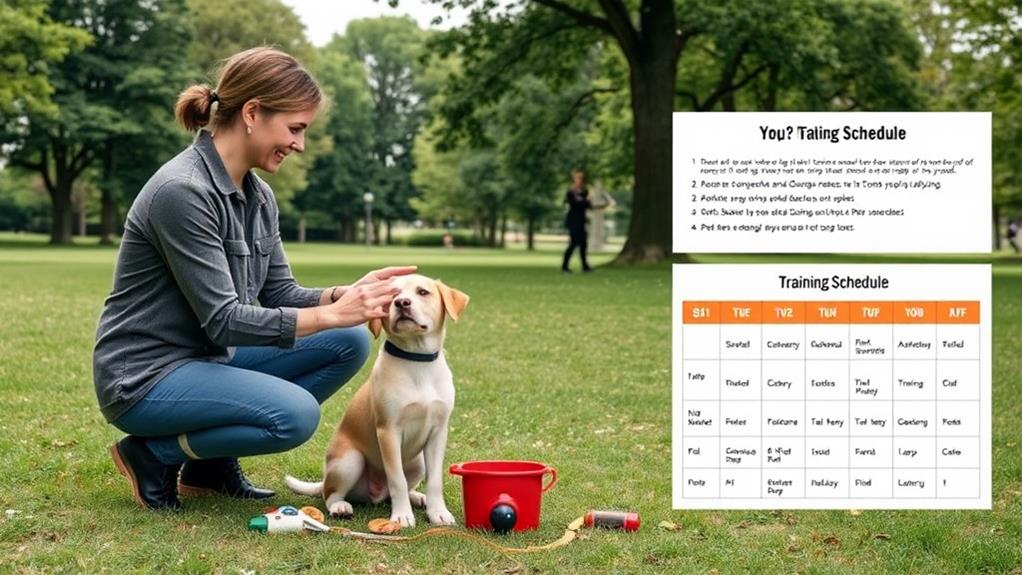
Consistency in training is essential for your dog's success, as it helps them understand what you expect from them. When you use the same commands, gestures, and rewards consistently, your pup will quickly grasp what behaviors are desirable. For instance, if you teach your dog to sit using "Sit" one day and "Down" the next, they'll get confused and struggle to learn.
It's important to involve everyone in your household in the training process. If one person reinforces a command while another uses a different approach, it can lead to mixed signals. Make sure everyone uses the same commands and positive reinforcement techniques, so your dog receives clear guidance.
Additionally, establish a routine for training sessions. Dogs thrive on structure, and having regular training times will help your pup anticipate and engage better during practice. Whether it's daily short sessions or a few times a week, consistency in timing will enhance your dog's learning experience.
Keep Training Sessions Short
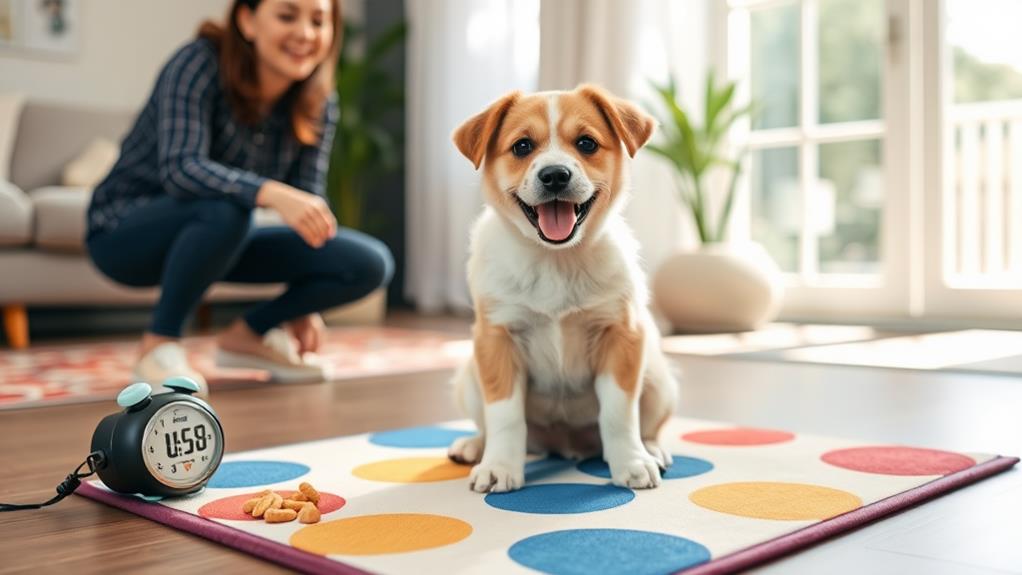
Training sessions should be kept short to maintain your dog's attention and eagerness. Dogs have limited attention spans, so aim for sessions that last about 5 to 10 minutes. This way, your pup stays engaged and excited, making learning more effective. If your dog starts losing interest, it's time to wrap it up.
Mix up the activities within each session. Varying exercises not only keeps things fresh but also allows your dog to practice different skills without feeling bored. Incorporate fun elements like playtime or treats to reward your pup for staying focused. This positive reinforcement solidifies their learning and encourages them to look forward to each training session.
It's essential to be mindful of your dog's mood. If they seem restless or distracted, don't hesitate to cut the session short. Ending on a high note is pivotal; you want your dog to finish feeling accomplished and keen for the next time. Consistency is key, so try to fit in short sessions throughout the week. By keeping training brief and enjoyable, you'll nurture a strong bond with your dog while effectively teaching them essential commands and behaviors.
Socialize Your Dog Early
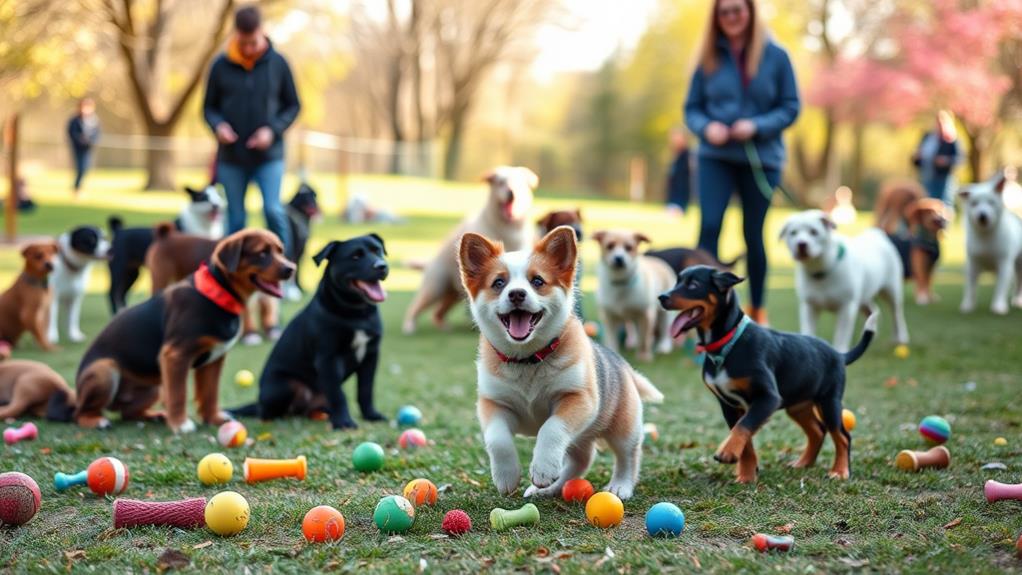
Socializing your dog early is essential for their development and overall well-being. It helps them become well-adjusted and confident adults. Start exposing your puppy to different people, animals, and environments as soon as they're fully vaccinated. The first few months of their life are critical, so take advantage of this period.
Introduce your dog to various sounds, sights, and smells. Visit busy parks, pet stores, or even your friends' homes. Make sure your pup has positive experiences during these outings, as negative encounters can lead to fear and anxiety later on. Encourage gentle interactions with other dogs, but always supervise to safeguard their safety.
Consider enrolling in puppy socialization classes. These classes provide structured environments where your dog can meet other puppies under the guidance of experienced trainers. This interaction will teach them to play nicely and learn canine etiquette.
Remember to reward your dog with praise and treats during socialization to reinforce positive behavior. The more experiences you provide now, the better equipped your dog will be to handle new situations in the future. Socializing early sets the foundation for a happy, well-behaved companion. Don't skip this crucial step in your dog's training journey!
Incorporate Fun and Games
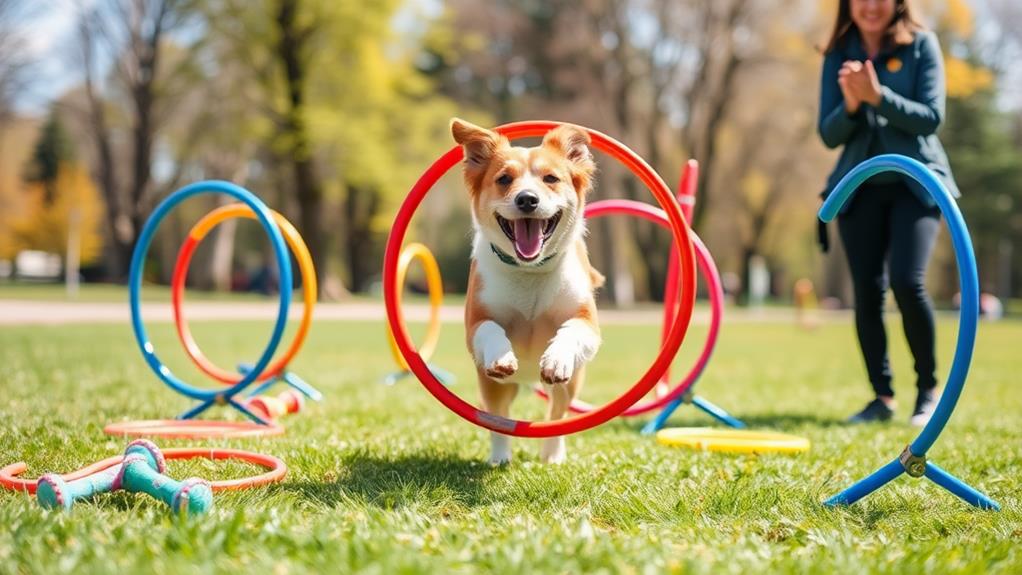
You can also use puzzle toys that dispense treats or food, encouraging your pup to think critically while having fun. This mental engagement is essential for preventing boredom and destructive behaviors.
Consider setting up an obstacle course in your backyard or living room using household items; this can challenge your dog's agility and obedience.
Remember to reward your dog with praise and treats during these games to reinforce good behavior. Vary the activities to keep things fresh and exhilarating. By making training feel like playtime, your dog will be enthusiastic to participate and learn.
Patience Is Key
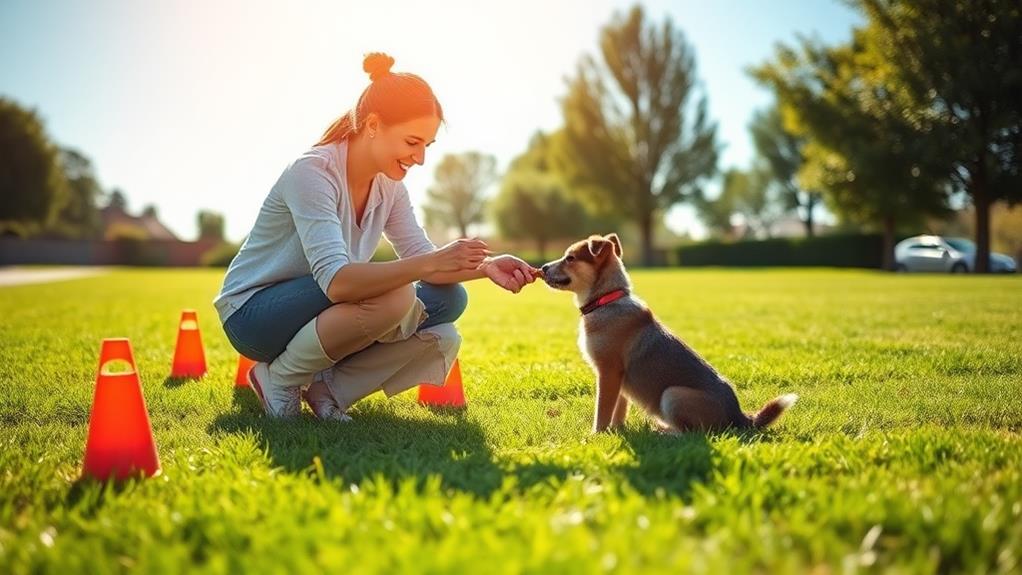
While incorporating fun and games keeps your dog engaged, it's equally important to remember that patience plays a key role in the training process. Training isn't a race; it's a journey. Your dog needs time to absorb new commands and behaviors, and you must be prepared for setbacks along the way.
When your pup doesn't respond as quickly as you'd like, it's easy to feel frustrated. Instead of showing impatience, take a deep breath and approach the situation calmly. Dogs can sense your emotions, and if you're stressed, they might become anxious or uncooperative.
Break down each training session into manageable parts. Celebrate small victories, and don't rush through them. If your dog struggles to grasp a command, slow down and give them the time they need to understand. Use positive reinforcement to encourage progress, and remember that each dog learns at their own pace.
Patience won't only strengthen your bond but also create a more enjoyable training experience for both of you. With time and consistency, you'll see the results you're aiming for, turning your pup into a well-behaved companion.
Frequently Asked Questions
What Is the Best Age to Start Training My Puppy?
You can start training your puppy as early as eight weeks old. At this age, they're enthusiastic to learn, and their brains absorb information quickly. Early training helps shape good behavior and strengthens your bond.
How Do I Correct Unwanted Behaviors Effectively?
To correct unwanted behaviors effectively, you'll want to use positive reinforcement consistently. Redirect your dog's focus, reward good behavior, and remain patient. Clear communication helps them understand what's expected, fostering a stronger bond between you both.
Can Older Dogs Learn New Commands?
Yes, older dogs can absolutely learn new commands! They might take a bit longer than younger ones, but with patience and positive reinforcement, you'll see progress. Keep sessions short and fun to maintain their interest.
How Long Should I Train My Dog Each Day?
Think of training like watering a plant; a little each day helps it grow. You should train your dog for about 15 to 30 minutes daily, keeping sessions short and engaging for the best results.
What Tools or Equipment Do I Need for Training?
For effective dog training, you'll need a few essential tools: a sturdy leash, a comfortable collar or harness, high-value treats, and toys. These items help reinforce positive behavior and make training sessions enjoyable for both you and your pup.
Conclusion
By blending basic commands, positive reinforcement, and playful practices, you'll pave the path to a perfectly trained pup. Remember, consistency is essential, and early socialization sets the stage for success. Keep those training sessions short and sweet, and don't forget to sprinkle in fun for fantastic results. With a dash of patience and persistence, you'll transform your dog into a delightful, obedient companion. So, let's get started on this rewarding relationship today!

